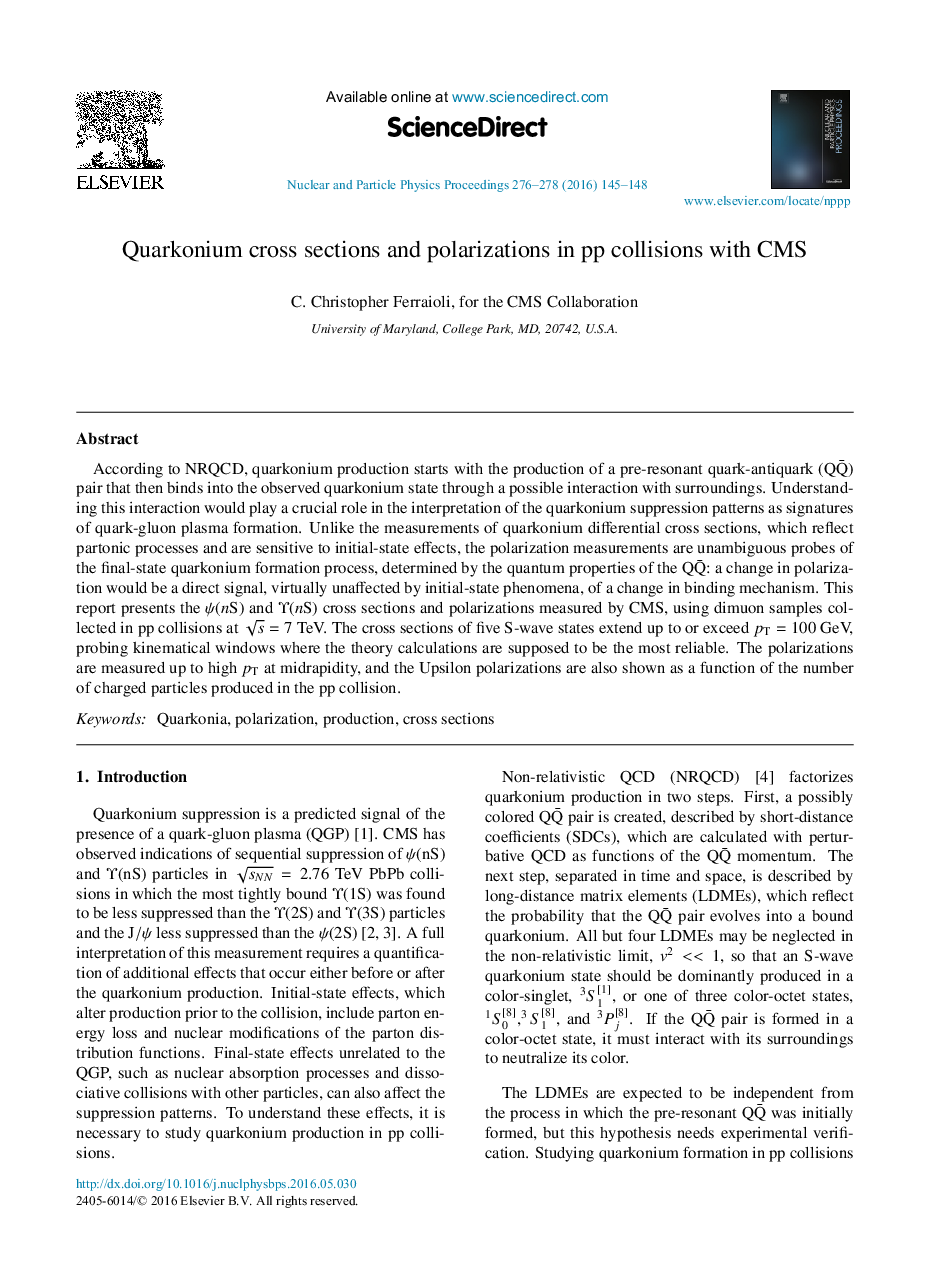| Article ID | Journal | Published Year | Pages | File Type |
|---|---|---|---|---|
| 5493810 | Nuclear and Particle Physics Proceedings | 2016 | 4 Pages |
Abstract
According to NRQCD, quarkonium production starts with the production of a pre-resonant quark-antiquark (QQâ¾) pair that then binds into the observed quarkonium state through a possible interaction with surroundings. Understanding this interaction would play a crucial role in the interpretation of the quarkonium suppression patterns as signatures of quark-gluon plasma formation. Unlike the measurements of quarkonium differential cross sections, which reflect partonic processes and are sensitive to initial-state effects, the polarization measurements are unambiguous probes of the final-state quarkonium formation process, determined by the quantum properties of the QQâ¾: a change in polarization would be a direct signal, virtually unaffected by initial-state phenomena, of a change in binding mechanism. This report presents the Ï(nS) and Ï(nS) cross sections and polarizations measured by CMS, using dimuon samples collected in pp collisions at s=7Â TeV. The cross sections of five S-wave states extend up to or exceed pT=100Â GeV, probing kinematical windows where the theory calculations are supposed to be the most reliable. The polarizations are measured up to high pT at midrapidity, and the Upsilon polarizations are also shown as a function of the number of charged particles produced in the pp collision.
Related Topics
Physical Sciences and Engineering
Physics and Astronomy
Nuclear and High Energy Physics
Authors
C. Christopher Ferraioli, CMS Collaboration CMS Collaboration,
